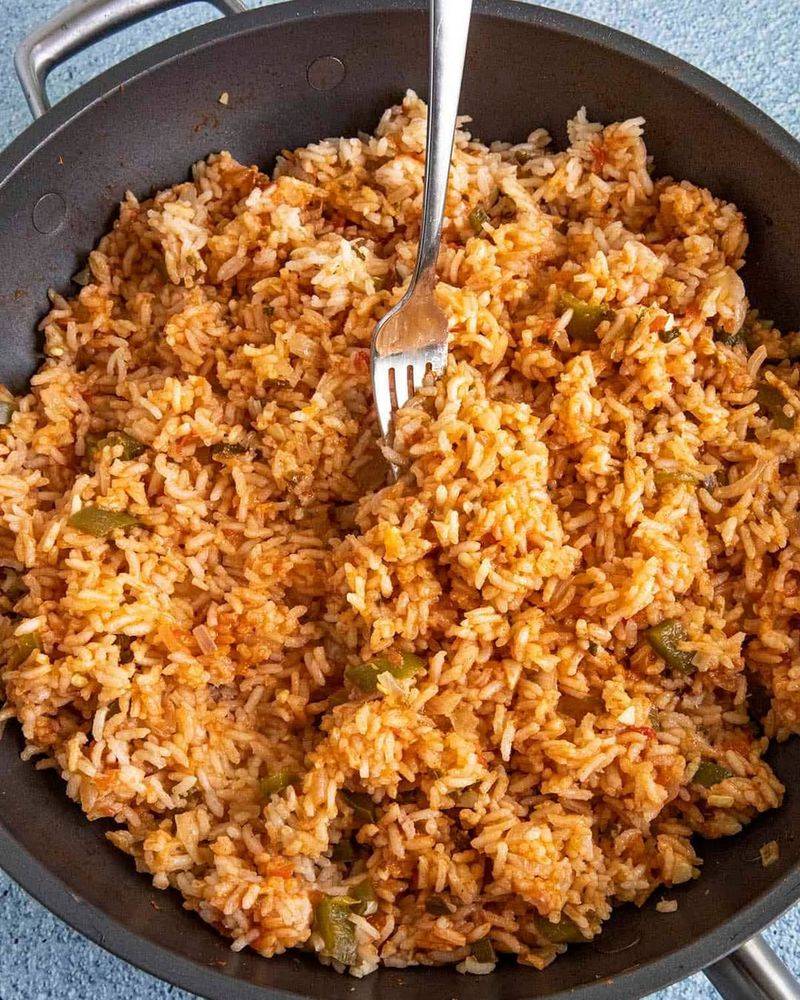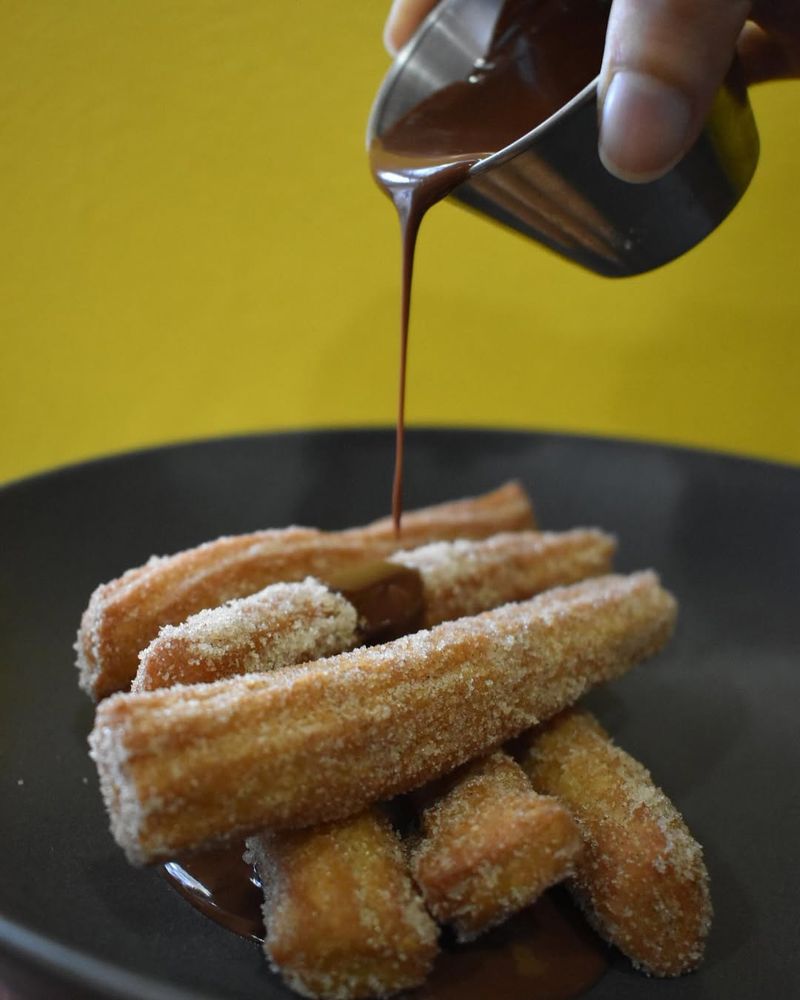When you walk into a Mexican restaurant, you expect bold flavors, fresh ingredients, and mouthwatering dishes—but sometimes, what you get is a bland, cheese-smothered disaster. If your chips taste like cardboard, your margarita looks neon green, or your tacos come in a hard shell by default, you might have wandered into the wrong cantina.
Not all Mexican restaurants are created equal, and some are more Tex-Mess than Tex-Mex. So before you take another bite of that rubbery tortilla or suspiciously sweet guacamole, check out these signs that scream “Get the check and run!”.
Because when it comes to Mexican food, you deserve the real deal, not a reheated regret.
1. The Chips and Salsa Are an Afterthought

Chips and salsa should be a welcoming start to any Mexican meal. If the chips are cold, stale, or obviously from a store-bought bag, it’s not a good sign. The salsa should be vibrant and fresh, not resembling ketchup.
A quality restaurant takes pride in serving house-made salsa, full of fresh ingredients and bursting with flavor. This simple appetizer sets the stage for the entire meal, so if it’s lackluster, be cautious.
2. The Menu Is a Generic Mess

An authentic Mexican restaurant should focus on traditional Mexican flavors and dishes. If the menu features an odd assortment like spaghetti or hamburgers, it’s a red flag.
While some Americanized options may be present, the main focus should be on genuine Mexican cuisine. A cluttered menu often indicates a lack of dedication to authenticity.
Be wary of places trying to be everything to everyone, as this usually means they excel at none.
3. The Cheese Is a Neon Yellow Nightmare

Authentic Mexican cuisine uses cheeses like queso fresco, Oaxaca, or cotija. If the dishes are drenched in bright yellow, processed cheese, it’s a warning sign.
This type of cheese is often used to mask inferior ingredients and lacks the rich, complex flavors of traditional Mexican cheeses. A good Mexican dish uses cheese sparingly, allowing it to complement rather than overpower the other ingredients.
If you find yourself facing a plate of neon yellow cheese, it’s a signal that you might be in the wrong place.
4. Every Dish Is Smothered in Cheese and Sour Cream

An overload of cheese and sour cream can indicate an attempt to hide subpar ingredients. Authentic Mexican cuisine emphasizes bold spices, fresh toppings, and slow-cooked meats. If the primary flavors are cheese and dairy, it might be time to reconsider.
A diverse range of tastes should shine in each dish, highlighting the complexity and richness of Mexican cooking.
5. The Tortillas Are Store-Bought and Stale

Tortillas are the foundation of many Mexican dishes, and they should be fresh and flavorful. If they crumble or have a rubbery, store-bought texture, it’s a red flag.
A quality Mexican restaurant makes fresh corn and flour tortillas daily or sources them from a reputable local tortillería. If your tortillas don’t melt in your mouth, consider finding a place that values this essential component.
6. There’s No Spice in Anything

Mexican food is celebrated for its bold, layered flavors and spices, but not everything has to be fiery hot. If even the hottest salsa tastes like bland tomato juice, they’re playing it too safe.
While not every dish should be spicy, a lack of spice altogether suggests a lack of authenticity. The essence of Mexican cuisine lies in its vibrant and diverse use of spices, so don’t settle for anything less.
7. The Rice Is Dry and Flavorless

Mexican rice should be fluffy, well-seasoned, and infused with tomato, garlic, and spices. If it’s dry or tastes like plain, packaged rice, it’s a sign of corner-cutting.
8. Margaritas Come from a Machine, Not Fresh Ingredients

A margarita should be a refreshing and balanced drink, made with fresh ingredients. If it’s neon green and overly sweet, it likely comes from a premixed jug. Such margaritas lack the natural citrus zest and smoothness of a well-crafted cocktail.
An excellent margarita complements the flavors of a Mexican meal, adding a touch of acidity and refreshment.
9. The Tamales Are Dry or Hard

A good tamale should be moist, fluffy, and flavorful, with a perfect balance of masa and filling. If it’s dry, hard, or tastes like plain cornmeal, it’s a red flag.
Well-made tamales are a labor of love, requiring time and skill to perfect. The harmony between the masa and filling creates a delightful taste experience.
10. The Guacamole Tastes Store-Bought

Guacamole should be fresh, chunky, and made with ripe avocados. If it tastes bland, too smooth, or like it came from a plastic container, it’s a problem.
Store-bought guacamole often lacks these nuances, providing a dull and flavorless experience. A genuine Mexican restaurant will serve guacamole that bursts with freshness and flavor.
11. The Decor Looks Like a Generic Tex-Mex Chain

A restaurant’s decor can hint at its authenticity. Over-the-top, stereotypical decor with plastic sombreros and neon chili pepper lights can signal a lack of genuine Mexican roots.
While decor is part of the dining experience, it shouldn’t overshadow the focus on food. If the decor seems like a Tex-Mex chain’s attempt at being “Mexican,” it might be covering up for what’s lacking in the kitchen.
12. Every Dish Tastes the Same

If enchiladas, tacos, and burritos all taste the same, it indicates a lack of effort in creating distinct flavors.
Mexican cuisine is known for its bold and complex flavors. Each dish should offer a unique taste experience, showcasing the diversity within Mexican cooking.
When every dish has the same seasoning, it reflects a monotonous approach, failing to capture the vibrancy and richness of authentic Mexican food.
13. The Salsa Options Are Bland or Limited

A variety of salsas is a hallmark of a good Mexican restaurant. If your only option is a bland, watery tomato sauce, they’re not serious about flavors.
Authentic places offer a range of salsas, from mild to spicy, including unique options like roasted or salsa verde. These choices cater to different taste preferences and add layers of heat and flavor to meals.
14. They Charge Extra for Basic Condiments

Being charged extra for fundamental condiments like salsa, tortillas, or limes is a warning sign. These staples should accompany your meal without added cost in a good Mexican restaurant.
A quality restaurant values customer satisfaction, ensuring all essential condiments are included, contributing to a complete and enjoyable dining experience.
15. They Serve Pre-Made Frozen Churros

Churros should be freshly made, crispy on the outside, and soft on the inside. If they’re hard, overly sweet, or dry, they’re likely pre-made and frozen.
Fresh churros are a treat, offering a delightful crunch followed by a soft, warm center. The coating of cinnamon sugar adds an irresistible sweetness.
16. The Mole Tastes Like Canned Chocolate Sauce

Mole is a complex sauce with over 20 ingredients, including chiles, nuts, spices, and a hint of chocolate. If it tastes like chocolate syrup with tomatoes, it’s not authentic.
A true mole is a labor-intensive creation, simmered to perfection, blending flavors into a rich, savory delight. The harmony of its ingredients should create a symphony of taste, not a sugary imitation.
When mole lacks depth and complexity, it’s a sign of shortcuts in preparation, missing the essence of this iconic Mexican sauce.
17. There Are No Regional Specialties on the Menu

A good Mexican restaurant highlights regional specialties, offering a diverse taste of Mexico’s culinary landscape. If the menu is just tacos, burritos, and nachos, it’s likely Americanized fast food.
Authentic places showcase dishes from various regions, like Oaxacan mole or Yucatán’s cochinita pibil.
These regional dishes provide a richer, more varied flavor palette, celebrating Mexico’s culinary heritage. Without them, the menu lacks depth and authenticity, failing to represent the true diversity of Mexican cuisine.
18. They Offer Fajitas but No Tacos al Pastor

Fajitas are a Tex-Mex creation, not a traditional Mexican dish. While they can be delicious, if a restaurant serves fajitas but lacks tacos al pastor, barbacoa, or birria, it might not be authentic.
These traditional offerings bring authentic flavors and cultural significance. A menu missing these items may indicate a lack of genuine Mexican culinary expertise.
Leave a comment